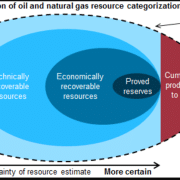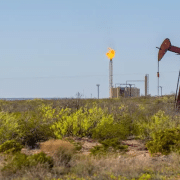DISCLAIMER: We are not financial advisors. The content on this website is for educational purposes only and merely cites our own personal opinions. In order to make the best financial decision that suits your own needs, you must conduct your own research and seek the advice of a licensed financial advisor if necessary. Know that all investments involve some form of risk and there is no guarantee that you will be successful in making, saving, or investing money; nor is there any guarantee that you won’t experience any loss when investing. Always remember to make smart decisions and do your own research!
When it comes to investing in natural resources, understanding the distinctions between Overriding Royalty Interests (ORRIs) and mineral rights is crucial. While both offer opportunities for passive income from oil, gas, and mineral extraction, they differ significantly in terms of ownership, control, and financial benefits. In this in-depth analysis, we explore the key differences and benefits of ORRIs versus mineral rights, providing valuable insights for investors, landowners, and stakeholders in the energy and mining sectors.
Understanding Overriding Royalty Interests (ORRIs)
An Overriding Royalty Interest (ORRI) represents a contractual right to a share of production revenue from oil, gas, or mineral leases, separate from the ownership of the underlying mineral rights. ORRIs are typically granted to third parties, such as landowners or investors, by the lessee or operator of the property. ORRI holders receive a predetermined percentage of the gross production revenue, often without assuming the associated costs or liabilities of exploration and development activities.
Exploring Mineral Rights
Mineral rights, on the other hand, confer ownership and control over subsurface resources, including oil, gas, coal, metals, and other minerals. Holders of mineral rights have the exclusive authority to explore, extract, and develop these resources from the land or mineral estate they own. Unlike ORRIs, which are contractual interests, mineral rights represent a property interest in the underlying minerals, granting the holder significant control and financial benefits from resource extraction.
Key Differences between ORRI vs. Mineral Rights
Ownership and Control: The primary distinction between ORRIs and mineral rights lies in ownership and control. While mineral rights grant full ownership and control over subsurface resources, ORRIs entail a contractual entitlement to a share of production revenue, without ownership of the underlying minerals.
Financial Benefits: ORRIs provide passive income in the form of royalty payments based on the gross production revenue generated from the leased property. In contrast, holders of mineral rights not only receive royalty payments but also bear the costs and risks associated with exploration, development, and operation of the mineral resources.
Risk Exposure: ORRI holders typically have minimal exposure to operational risks, liabilities, and capital expenditures related to oil, gas, or mineral extraction. Conversely, holders of mineral rights assume the full spectrum of risks associated with resource development, including geological risks, environmental liabilities, and market volatility.
Transferability and Duration: ORRIs are often created through contractual agreements and may have limited transferability or duration, depending on the terms negotiated between the parties. In contrast, mineral rights are real property interests that can be bought, sold, leased, or inherited, with potentially perpetual duration, subject to legal and regulatory restrictions.
Benefits of ORRI vs. Mineral Rights
Passive Income: Both ORRIs and mineral rights offer opportunities for passive income from resource extraction, providing holders with a steady stream of royalty payments based on production volumes and market prices.
Portfolio Diversification: Investing in ORRIs or mineral rights can diversify investment portfolios, offering exposure to the energy and mining sectors, which may perform differently than traditional asset classes such as stocks, bonds, or real estate.
Inflation Hedge: Revenue generated from ORRIs and mineral rights may serve as a hedge against inflation, as commodity prices tend to rise over time, preserving the purchasing power of income streams.
Tax Advantages: Royalty income derived from ORRIs and mineral rights may be subject to favorable tax treatment, including depletion allowances, capital gains treatment, and potential tax deferral strategies.
ORRIs and mineral rights represent distinct yet valuable investment opportunities in the natural resources sector. While ORRIs offer passive income without the burdens of ownership and operational risks, mineral rights provide ownership and control over subsurface resources, with the potential for greater financial rewards but also higher levels of risk and responsibility. Understanding the differences and benefits of ORRIs versus mineral rights is essential for investors, landowners, and stakeholders seeking to capitalize on opportunities in oil, gas, and mineral exploration and production. By evaluating their investment objectives, risk tolerance, and financial goals, individuals can determine the most suitable strategy for participating in the dynamic and rewarding world of natural resource investing.
If you have further questions related to the ORRI vs. Mineral Rights topic, feel free to reach out to us here.










